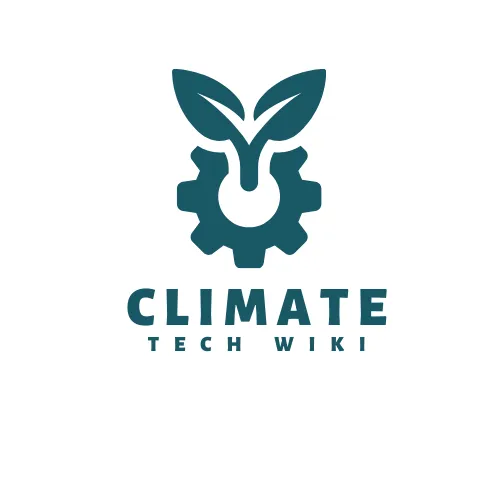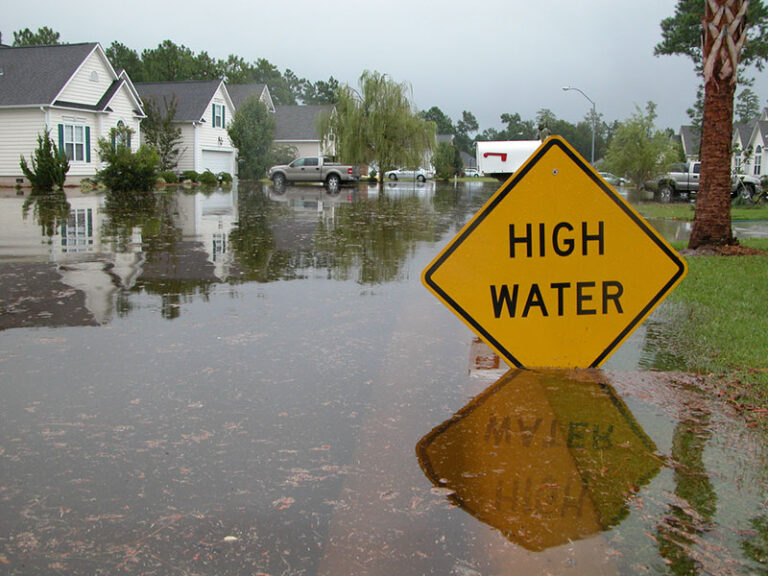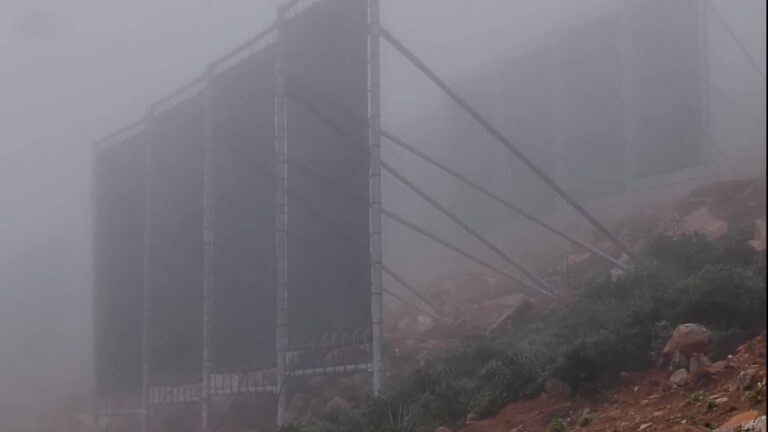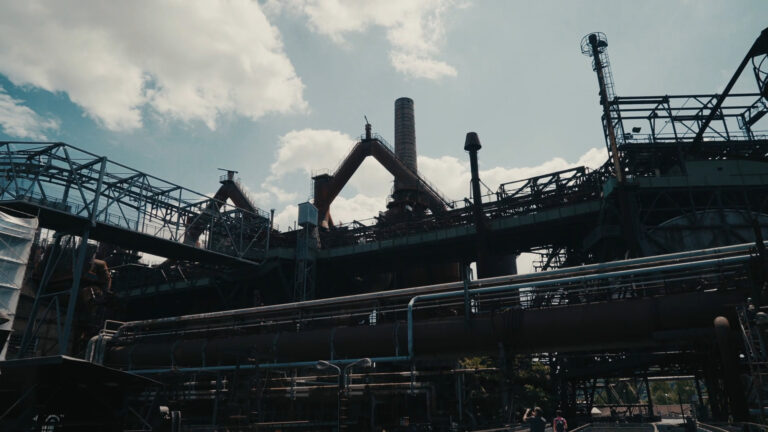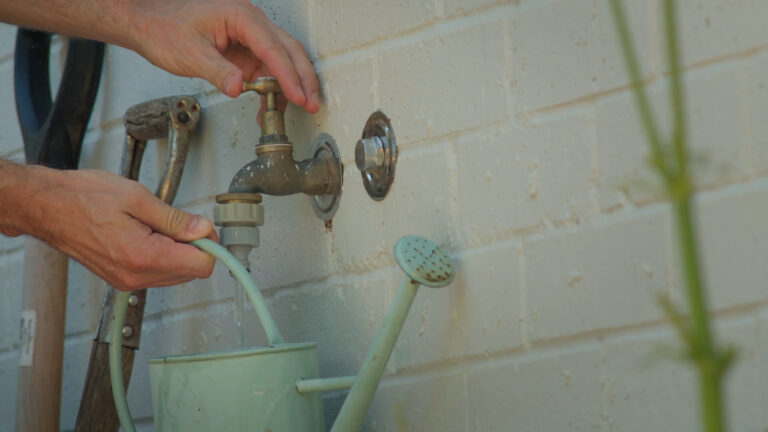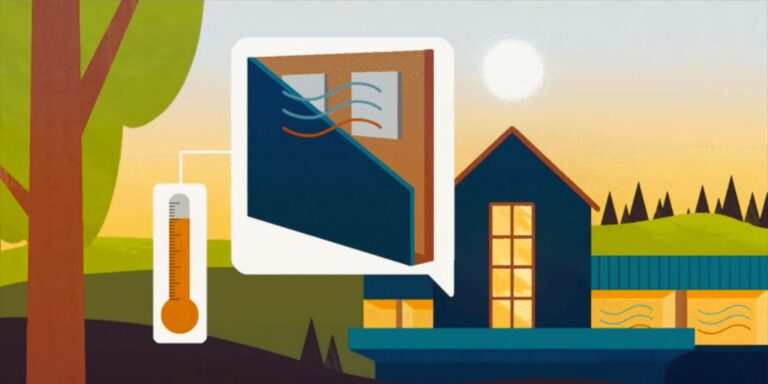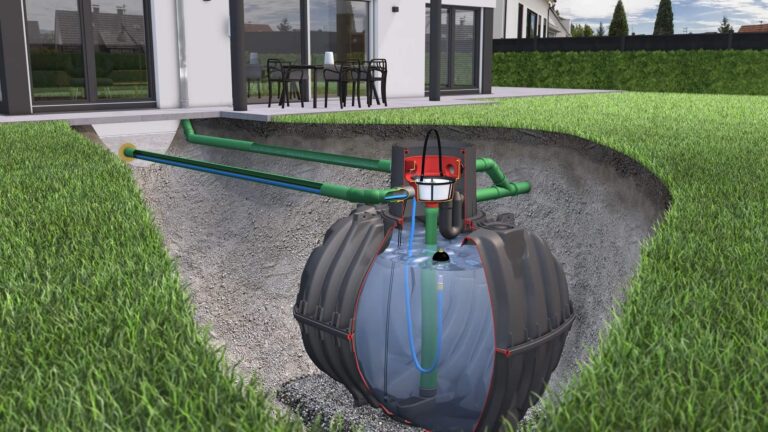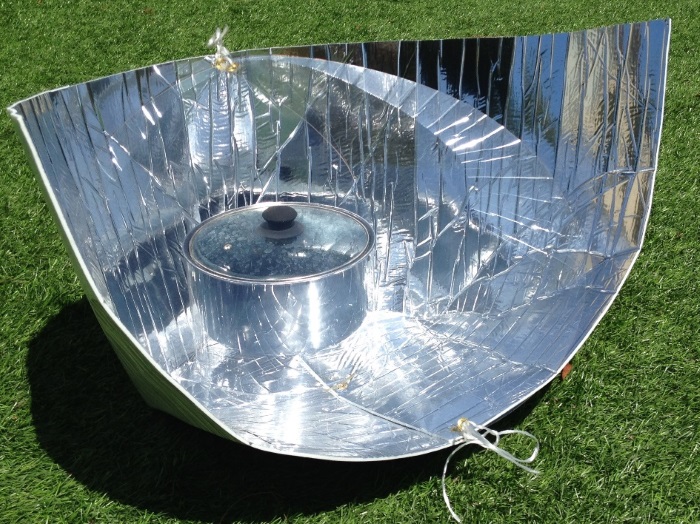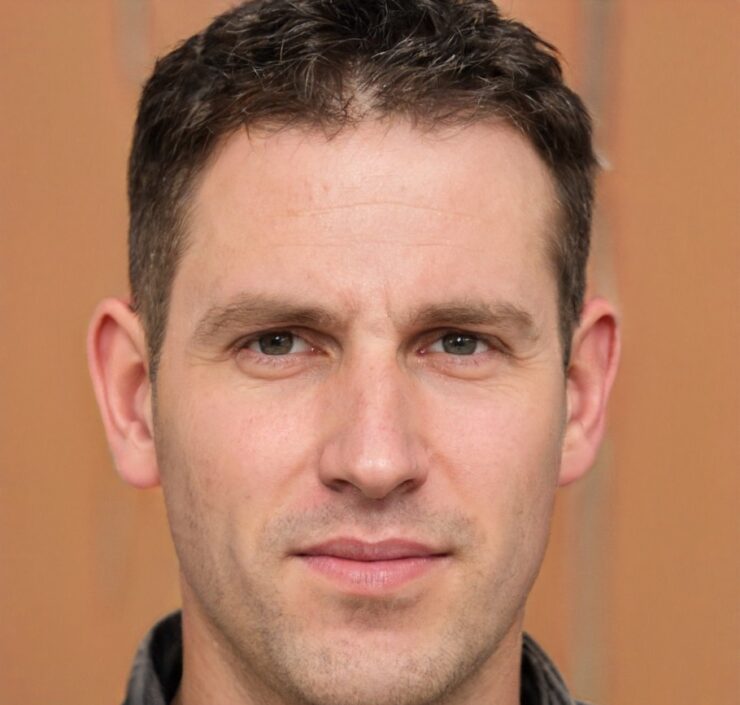People have been using the solar cooker or oven for centuries. The first solar oven was made by a Swiss scientist in 1797. Solar cookers may be used to cook food and to heat the drinking water.
The solar cooker concentrates and bends solar radiation with the help of a reflecting surface on the back, top, and bottom sides of a pot. Handling it is easy, but the solar cooker does need its space: the larger the reflector surface, the stronger its power to heat.
There are a variety of types of solar cookers: over 65 major designs and hundreds of variations of them.
The basic principles of all solar cookers are:
Concentrating sunlight: Some device, usually a mirror or some type of reflective metal, is used to concentrate light and heat from the sun into a small cooking area, making the energy more concentrated and therefore more potent.
Converting light to heat: Any black on the inside of a solar cooker and certain materials for pots will improve the effectiveness of turning light into heat. A black pan will absorb almost all of the sun’s light and turn it into heat, substantially improving the effectiveness of the cooker. Also, the better a pan conducts heat, the faster the oven will work.
Trapping heat: Isolating the air inside the cooker from the air outside the cooker makes an important difference.Using a clear solid, like a plastic bag or a glass cover, will allow light to enter, but once the light is absorbed and converted to heat, a plastic bag or glass cover will trap the heat inside. This makes it possible to reach similar temperatures on cold and windy days as on hot days.
Plastic Sheet: Uses plastic sheets to assure that liquids do not seep through into the oven. Also they prevent staining of the underlying sheet in the oven.
According to the design, solar cookers are of three types:
- Box cooker
- Panel cooker
- Parabolic cooker
A box cooker is designed with a special wall that shines or reflects sunlight into the box. Heat gets trapped under a piece of glass or plastic covering the top of the cooker. A box oven is effective for slow cooking of large amounts of food.
A panel cooker comprises of several flat walls, or panels, that directly reflect the sun’s light onto the food. The food is inside a separate container of plastic or glass that traps heat. Panel cookers can be easily built with very limited amount of supplies and at a very low cost. In Kenya, for example, panel cookers are being manufactured for about €1.50 each.
Figure 1: The Structure
More costly solar cookers have a  . They are comprised of rounded walls which focuses sunlight directly into the bottom of the oven. Although food cooks quickly in parabolic ovens, they are hard to construct.
. They are comprised of rounded walls which focuses sunlight directly into the bottom of the oven. Although food cooks quickly in parabolic ovens, they are hard to construct.
With a diameter of 140 cm, corresponding to an output of 600W, they need about 25 minutes to bring 3 litres of water to a boil; with half that diameter (150W output), it would take about 40 minutes to boil just 1 litre of water.
Using the parabolic mirror is simple, however, one must track the sun by hand. More expensive versions have a built-in tracking device that automatically follows the sun.
Figure 2: Important Details
Despite the popularity of solar cookers and various supportive actions for the development projects, there are still few barriers reported for the successful implementation of this technology around the globe, especially in the developing nations.
Currently, the use of solar ovens is very limited among the rural communities of the developing countries. This is due to their high manufacturing costs and the inappropriateness of current designs for multiple environments.
Many designs utilise material that is not locally available, or require highly skilled labour. These are some of the reasons why the promotion of solar cookers worldwide has traditionally been non-commercial.
The commercialisation of solar ovens is not a worthwhile venture for entrepreneurs, since the manufacturing and sale of solar ovens may not provide the best return on investment.
The Current Status of the Technology
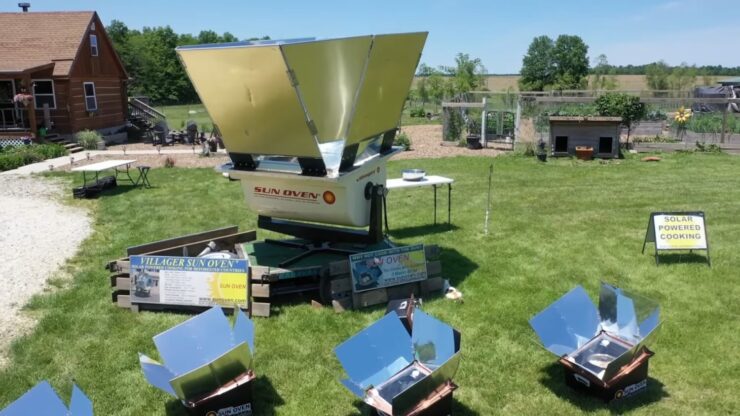
The Temple Solar Project in Honduras finances, purchases, delivers and sets in operation large baking and cooking sun ovens in locations where natural fuels are depleted and populations are undernourished.
The large Villager Sun Ovens are the basis for self-supporting community bakeries to replace outdated and environmentally harmful methods of cooking and to provide new, healthy means for feeding the citizens in deprived areas of underdeveloped nations.
The Temple Solar Project, a humanitarian service of Rotary District 6450, has brought the means for cooking and baking without fossil fuels to numerous communities in foreign lands where natural resources have been depleted or are at great risk.
Another project, which takes place in Ethiopia, applies cookers based on the solar cooker EG SOLAR SK14 developed by the Foreign Aid Group Solar Cooker of the State Technical College in Germany (EG SOLAR).
This non-governmental organisation has the aim to spread the idea of solar cooking all over the world by selling model cookers, distributing detailed construction plans and mirror material if not available in the country.
The idea was brought by the Arba Minch Water Technology Institute (AWTI) lecturer Mr. Ernest Willand from Germany and was encouraged and supported by the environmental club of the AWTI and the head of the AWTI’s metal workshop leader Mr. Muise Gipo.
After half a year of practical co-operation between Mr. Muise and Mr. Willand, a technique had been developed to build the solar cookers using only simple reinforcement bars, which are readily available in Arba Minch.
The developed technique uses simple construction aids made from plate wood, to guarantee a high accuracy and quality of the cookers, and use only few standard tools which are available in any metal workshop in Arba Minch.
With the plate-wood models, which can easily be copied, any good metal worker who is able to do simple welding work is able to produce cookers after only one day of training (Solar cooking archive, 2006).
In Aceh (Indonesia), there has been an ongoing solar cooker project, which has disseminated 1,000 solar cookers and heat retaining containers, thus avoiding the use of non sustainable harvested fuel wood. With a general rate of 3.5 tCO2/year per solar cooker, the overall CO2 emission reduction would be 3.5 ktonnes annually (Solar cooking archive, 2006).
In 1991, the Rotary Clubs of Fresno (California, USA) and Milwaukee (Wisconsin, USA) began introducing solar cooking technology to villagers who rely on wood burning fires for cooking. In addition to stripping area forests, villagers cooking in poorly ventilated homes were at risk for burns, eye and respiratory diseases.
After solar technology has been introduced by the Rotary clubs and villagers trained in its use, the environmental, economic and social benefits are quickly apparent. The simple devices are capable of boiling water, baking bread, soups, poultry and other foods.
In Honduras, a group of nuns use a large Villager Solar Oven to operate a neighborhood bakery. The oven’s cooking temperature reaches 250 to 316ºC and can bake 500 to 600 loaves per day. At present, the bakery employs eight people, providing them with a stable income. Solar technology is credited with slowing down the process of deforestation in many of these developing countries. Its use is increasing, and in turn, the demand for wood, charcoal, bottled gas, and electricity is decreasing.
The introduction of solar cooking has also proven to be time efficient, saving hours spent daily by villagers for cutting and gathering firewood.
Since 1991, solar cooking technology has been introduced in villages in:
- Costa Rica
- Egypt
- Ghana
- Honduras
- Haiti
- India
- Jamaica
- Nicaragua
- Sri Lanka
- Zambia
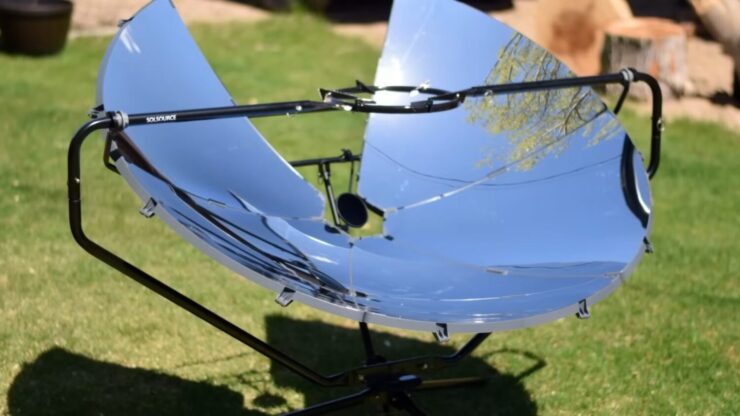
In 1996, Rotary clubs in the USA, Kenya, Japan, and Taiwan began collaborating to fund a project by the Rotary Club of Nairobi East to build efficient, durable and inexpensive solar cookers for the world-wide use.
Rotary clubs are learning how to produce less expensive solar cookers and are teaching villagers how to produce and use the technology. They use public awareness and education activities to promote the use of solar cooking technology.
Through this development of solar cookers, several issues like poverty eradication, technology transfer and capacity building have been addressed properly with a resulting decrease in deforestation rate, energy saving/conservation, reduction of cooking fuel use, reduction of respiratory, lung and eye diseases and capability to boil water and reduction of intestinal diseases.
In Kenya, many refugees were trading their food rations for cooking fuel until Solar Cookers International, an American NGO, started providing low-cost, solar-powered ovens in the Kakuma refugee camp. This initiative helped decrease the reliance on the depleting forests in northwest Kenya for firewood.
Since its inception in 1995, the program has positively impacted over 22,000 families, benefiting more than 100,000 individuals. The locally manufactured solar cookers use a reflective surface, a dark pot with a lid, and a clear plastic bag to effectively trap heat and cook meals. Funded through private donations and grants, each cooker costs just over €3.70 per person.
Feedback from the refugees indicates significant savings in firewood, with an average reduction of 27% and some reporting savings as high as 70%. Additionally, the use of solar cookers has led to improved health outcomes due to reduced air pollution and fewer burns.
The adoption of solar cooking technology has further contributed to wood conservation and fire prevention. The efforts of Solar Cookers International exemplify how international collaboration can foster self-reliance, protect the environment, and aid vulnerable populations in refugee settings.
The Solar Cooking Dissemination project has been a part of India’s National Programme for the Development and Use of Renewable Energy Sources since 1982. 85% of the (mainly) box – type cookers have been distributed in six states: Madhya Pradesh, Maharashtra, Rajasthan, Uttar Pradesh, Gujarat and Delhi (Solar cooking archive, 2006).
The government of India has offered a subsidy of 33% of the price of the cookers to potential buyers. Some advertisements in India have emphasised solar cookers being like any other luxury article (radio, television or refrigerator). This has led potential buyers to get a good image of solar cookers. This approach together with subsidies has sold the largest number of solar cookers in the world.
Figure 3: Disseminating Solar Cookers

The first solar cooker in China appeared almost 40 years ago, in 1956 (Solar cooking archive, 2006). Before 1975, when the first China National Solar Energy Congress was held, only a few people performed research on solar cooking.
In 1983, at the Conference of National Comparison and Exchange of Solar Cookers, 48 institutions presented more than 100 models of solar cookers, of which 80 had been tested.
About 100,000 of the solar cookers in use in China now are of the eccentric axis concentrator type. In the recent years, China has a strong R&D on solar cookers. The need for primary energy is huge in China, which has almost a 1 billion rural population.
The potential for solar cooking both economically (saving fuel), and in satisfying rural people’s primary energy needs is vast.
In the USA, Americans are encouraged to use solar cookers and support a world wide solar cooking effort. The parts for approximately 2,000 SOS sport solar cookers can be shipped in a 40-foot container.
Assembly is simple and requires no electricity or dependence on large equipment. This provides employment opportunities in the host country. SOS helps provide training for assembly and use of cookers. A local Board of Directors from the host country along with SOS provides oversight for the governance of the project.
In India, numerous financial incentives are available for solar cooker programs. These include funding for promotional activities such as advertising, cooking demonstrations, contests, training, and the development of marketing networks.
Two innovative incentive models are currently being implemented: “solar food restaurants” established by nodal agencies in key locations, and support for “self-employed women” who can make a livelihood by repairing and servicing solar cookers.
Interest-free loans for purchasing solar cookers are available through the Indian Renewable Energy Development Agency (IREDA) and various commercial banks.
Solar cookers are particularly popular in rural areas of developing countries, suggesting a promising future for the technology in terms of both development and market expansion across these regions.
However, commercializing the technology in developed countries poses challenges due to stiff competition from modern appliances like microwave ovens, which offer speed, ease of use, adjustability, and convenience.
The R&D should be carried out in the direction of making solar cookers equally attractive. Similarly, in order to draw the attention of rural communities towards this technology, it is required that the cost is reduced, efficiency is maximized and robustness of the appliance is increased with a more convenient way of using the cookers.
Recently, many experiments on useful and cheap designs of solar cookers are underway. Solar Now, Inc. provides instructions on how to construct a solar oven from used materials, such as a pizza box.
The Pizza Box Solar Oven is capable of reaching temperatures of 135° C, which enables it to cook many types of food and even kill bacteria in water. The Pizza Box Solar Oven can be used to heat English muffin pizzas, hot dogs, or even bake cookies or biscuits.
The solar cookers if developed with the solar tracking systems can make them more efficient in the future.
Figure 4: Pizza Box Solar Oven

How the technology could contribute to socio-economic development and environmental protection?
Well, while efforts to introduce solar cookers have been fragmented in the past, they have nevertheless recently overcome most of the technical supply side barriers that have inhibited the wide-scale introduction of this technology, such as poor performance and safety characteristics.
Solar cooking is now poised, worldwide, to deliver significant benefits to both the environment and the quality of life for many people.
The introduction of a worldwide solar cooker programme, implemented through a network of local and regional actors, has the potential to have a significant effect in the following activities:
- Mitigate CO2 emissions;
- Reduce local environmental degradation;
- Improve health;
- Stimulate economic activity and promote gender equity;
- Promote equitable access to energy; and
- Poverty alleviation.
Contribution of the Technology to Social Development

Since it is mainly women who do the cooking in the household, it is mainly their time that is being saved by using a solar cooker.
There are two potential time saving elements associated with the use of a solar cooker: Time savings which results from the reduction in woodgathering; and Potential time-savings in the actual cooking process.
Furthermore, in some case studies, such as ‘Sola de Vida’ in Costa Rica, the main effect of implementing solar cookers was the improvement of womens’ lives. More in detail, the project has built and emphasized links with women’s empowerment by creating neworganizations led by women.
Building women’s ability to take actions on their own, particularly regarding theenvironment and livelihood issues, is a central goal of this program. So far, ten such community organizationshave been created. This project enables women to engage in personal development in ways that were not possiblebefore, since solar cooking is less time-consuming.
The project builds social and individual capacity by developinglocal groups and encouraging women to work together on other projects. For example, some groups now raiseawareness about domestic violence, and are starting support groups to help women.
The economic benefits associated with time-savings can be significant if the time is spent on productive, income generating activities. The impact of solar stoves on the household economy is dependant on the organisation of the household economy and the extent to which the household is linked to the wider economic network
Savings achieved through the use of the solar stoves were invested in more food, which were shared amongst the organised cooking groups. As it was demonstrated also in the GTZ field test in South Africa, these cooking groups increased food security as well as variety in the daily diet.
In the industrialised countries, the environmental benefits are mainly related to the mitigation of CO2 emissions and reduction of local environmental degradation, whereas in developing nations improvement of health conditions, promotion on equitable access to energy and poverty alleviation are the key benefits from the programme.
Solar cooking has been proposed as a potential solution for the GHG emission reduction. In optimum cases, solar cooking can significantly reduce the use of wood or biomass and all of the associated negative effects.
For instance in a testing of solar cookers in South Africa from GTZ, during the first phase of the field test, the overall fuel savings were 38%, almost 60 tons of wood, more than 2 tons of gas, and over 2000 L of paraffin.
There have been many estimates of potential contribution of solar cookers in reducing carbon emission. One optimistic estimate cites a potential reduction of fuelwood use by 36% due to solar cookers, which corresponds to approximately 246 million metric tonnes of wood each year.
This corresponds to an equivalent of CO2 emissions of 565 grams per kilogram of wood burned. Therfore, the optimistic estimate would provide for a net GHG offset of nearly 140 Mt per year (Grupp and Wentzel, 2002).
If we assume that there are 1.5 million operating solar cookers globally, and that each one cooks an average of 1 meal per day for 3 people, this results in an emission reduction of approximately 690 million kg (equivalent) of CO2 per year.
For calculation of these GHG emission reductions, it is recommended to apply the approved methodology for thermal energy production with or without electricity project (small scale activities), for which has been developed under the Clean Development Mechanism of the UNFCCC Kyoto Protocol (CDM).
This methodology helps to determine a baseline for GHG emissions in the absence of the project (i.e. business-as-usual circumstances), how emission reductions below this baseline can be calculated, and how these reductions can be monitored.
With a rapid development in solar cooking technology, many financing schemes for the promotion of the solar cooker projects have been noticed throughout the world.
Solar Cookers International (SCI) assists communities to use the power of the sun to cook food and pasteurise water for the benefit of people and environment. SCI is performing several research programmes on solar cookers.
Research adapts solar cooker devices and dissemination methods to diverse regions, and measures outcomes of all programs against goals and objectives.
Working with other members of the international solar cooking network builds awareness and support for solar cooking among policy makers in government, business and humanitarian agencies at local, regional, national and international levels.
The Abess Center for Environmental Studies is an enrichment/resource programme at Miami Country Day School. Using a project-based curriculum, students actively participate in authentic learning experiences.
The purpose of Solar Solutions put forward by this programme is to promote solar cooking in developing countries through curriculum design, teacher resources, web casts, videoconferencing, fundraising, and model solar cooking programmes and manufacturing opportunities.
The students actively invite other student participants from around the world and encourage collaborative research on cooker design, materials, and recipes. The most rewarding part of the project has been the outreach to developing countries. The students have formed a non-profit corporation and raised funds to provide solar cookers and solar cooker training in several countries and refugee camps.
These programmes are continuously growing, thus saving the lives of hundreds of families, providing jobs and income for women, and making a positive impact on their local environment.
Several organisations have been involved in the financing of solar cooker projects. For instance, the Solar Oven Society (SOS) exists to promote solar cooking to the American public and to provide a way to partner with over 2 billion people worldwide who lack adequate fuel for cooking their food (SOS, no date).
Persons Helping People (PHP, the sponsor of the SOS) is a non-profit organisation established in 1991 and based in Minnesota (USA). Following the wishes of its first donor, Virginia Persons, PHP is dedicated to helping alleviate hunger in developing countries by helping people help themselves.
The main focus of SOS may be summarised as follows:
- Production of low-cost, high-performance, durable, aesthetically-pleasing solar ovens,
- Establishing multi-faceted centers in developing countries for:
- Displays of varieties of solar cookers,
- Education and training,
- Assembly of solar cookers,
- Demonstrations of solar cooking,
- Wholesale and retail sales,
- Financing of solar cookers via village banking systems, and
- Encouraging Americans to use solar cookers and support a world wide solar cooking effort.
The parts for approximately 2,000 SOS sport solar cookers can be shipped in a 40-foot container. Assembly is simple and requires no electricity or dependence on large equipment. This provides employment opportunities in the host country.
SOS helps provide training for assembly and use of cookers. A local Board of Directors from the host country along with SOS provides oversight for the governance of the project.
In India, there are several financial opportunities on solar cookers programmes. The financial support is provided for promotional activities such as publicity, cooking demonstrations, competitors, training, development of marketing network etc. Incentives are offered in two new concepts: ‘solar food restaurants’ set up by nodal agencies in prime locations, and ‘self employed women’ (SEWs) who could earn a living by repairing and servicing solar cookers.
Under the loan schemes being operated through Indian Renewable Energy Development Agency (IREDA) and some commercial banks, interest free loans are given to purchase solar cookers.
